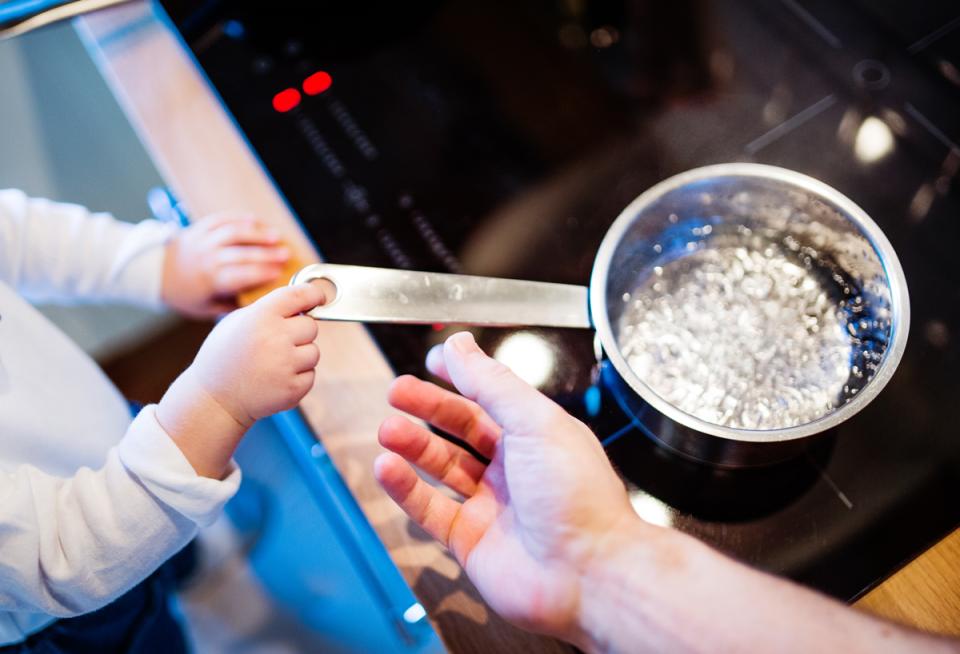Burn prevention
Burns are tragic for many reasons. After being burned, a child may require years of therapy and multiple surgeries to restore full ability to function. What's more, nearly all children's burn injuries are preventable.
In the kitchen
- Keep hot items near the center, away from countertop edges
- While cooking, keep toddlers in a high chair or playpen
- Avoid using tablecloths so toddlers don't grab them and pull hot items from the table onto their heads
- Keep appliance cords away from counter edges
- Turn pot handles away from stove edges
- Use extreme caution when cooking with a deep fat fryer or cooking with oil
- Enforce a "no zone" near the stove where kids are banned
Scald prevention
A scald is a burn caused by hot liquid or steam — particularly hot tap water, hot liquids (tea and coffee), hot foods (soups) and steam. Scalding can occur with temperatures just slightly above 120 degrees Fahrenheit. For children, merely three seconds of exposure to 140-degree water can produce a third-degree burn. Nearly 35,000 children are treated for scald burns each year, according to the National Safe Kids Campaign.
Consider these tips for preventing scalds:
- Install anti-scald devices on faucets and shower heads. Hot tap water accounts for one out of every four scald burns. When water reaches 120 degrees, a small metal piece expands within the device, shutting off the water supply to a few drops.
- Set your hot water heater no higher than 120 degrees.
- At bath time, test the temperature of bath water using the back of your hand before placing your child in the tub. The temperature should not exceed 100 degrees. In fact, children benefit from a cooler temperature than what adults typically choose.
- Once in the tub, ensure that your child remains seated with his or her back to the faucet. This way, your child won't be able to grab and turn on the faucet.
- Never leave your child unattended in the tub.
